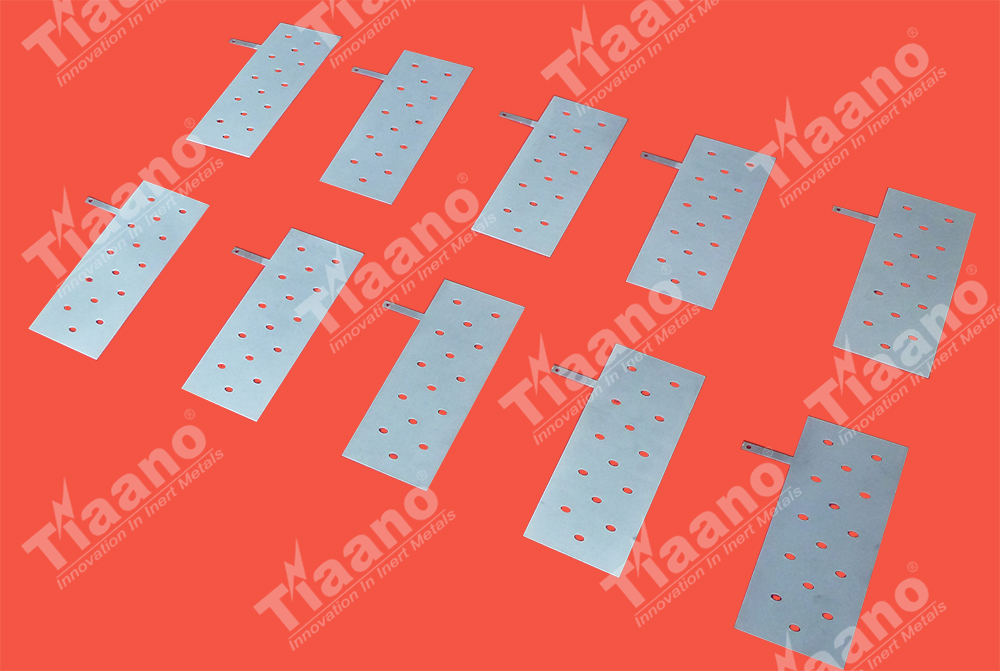The Platinum Titanium electrodes create the ionization, the electrode cell is the heart of an ionizer. It consists of a series of electrodes (plates), each separated by a membrane. The Platinized Titanium Mesh Anode is mostly used, because it has outstanding practical performance, such as strong ability of ionization release, good exchange of electrolyte, close structure and light weight, etc.
Anode Side: Platinum Plated Titanium Anode
Positively charged ions gather at the negative electrode to create reduced water, which concentrates available alkaline minerals, such as calcium, magnesium and potassium from the source water. This alkaline ionized water is drawn for drinking and cooking, through the main stainless steel spout.
Cathode Side: Platinum Plated Titanium Cathode
Negatively charged ions gather at the positive electrode to make oxidized water, which concentrates acid minerals such as nitrates, sulfides, chlorides, and fluorides from the source water. This acid ionized water has a myriad of external uses. It is discharged into the sink.
Advantages of Platinized Titanium Anodes in Ionization:-
Platinized anodes are having high current resistance
Economical due to minimum platinum requirement
Platinised anode is very high dimensional stability
Platinized anodes are having better conduction properties
Platinized anodes are having long life
Specification of Platinized Anodes in Ionization:-
Material: Platinized titanium anode (Platinum plated titanium anode)
Technology: Sand blasting, Acid washing, Electro Deposition Process
Dimension and Shape: Different dimension and shape is available, or according to custom's drawing or Design
Working Equipment: Water ionizer (Water Ionization Electrode Assembly)
Features: Effective& environment friendly method, High anti-corrosion property, High current efficiency property, Low chlorine evolution voltage, High catalytic property, Long lifetime, Light weight electrodes and Keep the operating voltage stably etc…
Types of Water Ionizer Anodes Tiaano offer:-
Platinum Plated Mesh Anode
Platinum Plated Sheet / Flat Anode
Platinum Plated Perforated Sheet Anode
Platinum Plated Slotted Sheet Anode
Platinum Plated Rod Anode
Platinum Plated Seamless Tube Anode
